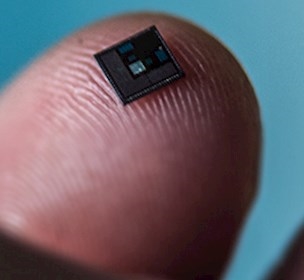Designing for meaningfulness in future smart products
How to move beyond convenience to helping people with self-development, relationships with others, and designing tangible, non-screen, everyday objects.
With the availability and affordability of new sensors, creating new smart products has never been easier. It’s time to ask ourselves if we really need these products and how they affect us, in terms of leading a meaningful life of fulfilment. IdemoLab presents several areas of consideration for companies developing smart products:
3 framings of meaningfulness
We can think of meaningfulness in 3 framings: As people-to-people connections, a person-to-their-sense-of-self and a person-to-time.For people-to-people connections, we aim to:
- Develop relationships between people,
- Deepen those relationships and
- Create shared identity.
- Self exploration,
- Self development
- Self expression.
- Short versus long term,
- Sense of time,
- Representation of time.
The mechanics of meaningfulness
There are 6 value-based characteristics of Designing for Meaningfulness including:
- Personal development: Identity, purpose, who am I, who have I been, who will I be?
- Moments of significance: Discovery, transformation, the ah-ha moment, leading to identity change.
- Value over function: The result of using a device, as it adds value to your life.
- Meaning in everyday life: Meaningfulness is different to every person in every situation - the ever-changing definition of what is meaningful on a daily basis.
- Critical thinking: Asking the hard questions, analysing and reflecting, leading to growth.
- Offline: Could the product have the same effect without measuring anything, or even being connected?
- Considering the mechanics of meaningfulness can help companies determine their product’s purpose and significance to the end user and whether their product contributes to a sense of fulfilment in life.
The manifestations of meaningfulness
The manifestations of meaningfulness are the physical characteristics that a product designer might consider when creating a new smart product. These include:
- Non-Screen: Does the product or service we are designing really need a screen to convey information? What other possibilities exist? Light, sound, movement, temperature change, etc? How does this interaction affect the user?
- Tangible: How does the product or service exist in the real-world? Is it a tangible object that one can hold in their hands, or is it something digital or virtual? How does the presence or absence of a physical object affect the experience of using this product or service?
- Craft: Have you considered utilizing a traditional crafts person in the design of your product? What does it mean to have a generic, mass product product compared to one which is hand-crafted or made using traditional materials or practices? How could your product’s experience be improved with craft?
- Everyday: How does your product relate to the everyday? Is it a foreign object which may be difficult to align with one’s experience of the world and everyday practices or is it a familiar object, easy to adapt to using?
Resources
A handbook created with Welfare Tech as part of research done with 9 companies to explore meaningfulness in the area of welfare technologies. This handbook includes guidelines and questions to help companies ask if what they are creating is, or needs to be designed with meaningfulness in mind.Read more about IoT and digital technology.
While an increasing number of companies have begun to incorporate user centered design approaches when creating smart products and services, there is little in the way of critical reflection about what types of products are being brought to market, and why they are needed.IdemoLab / FORCE Technology

